Some of the most common mistakes people make with their RVs aren’t always obvious until something goes wrong. I’ve been guilty of a few myself over the years.
Here are 13 things veteran RVers say you should absolutely avoid doing. These tips apply to all types of RVers, from weekend campers to full-time travelers, and could help you avoid costly or dangerous mistakes.
1. Overload Your RV
Exceeding your RV’s weight limits can create serious safety issues. Too much weight affects handling, braking distance, and can put stress on your axles, suspension, and tires. In some cases, it can even result in frame damage or denied insurance claims if an accident occurs.
Every RV has a Gross Vehicle Weight Rating (GVWR) and cargo carrying capacity listed by the manufacturer. If you’re towing, you also need to consider the weight your tow vehicle can safely handle, especially the pin or tongue weight. Use a CAT scale or a professional RV weighing service to check. Do this regularly, especially after making upgrades like adding solar panels, new furniture, or heavier appliances.
2. Skip the Final Walk-Around
Before pulling out of any site, always do a complete walk-around of your RV. This includes checking for power cords, water hoses, leveling blocks, tools on the ground, slide-outs, doors, and compartments.
I’ve personally seen folks drive away with storage bay doors open, and once saw an awning still out. A simple, systematic walk-around helps you catch things that might otherwise be missed in the rush to leave.
Tip: Use our handy RV Setup and Teardown Checklist to ensure you never miss a step!
3. Leave the Black Tank Open
Leaving the black tank valve open while connected to full hookups at a campsite can lead to a problem often called the “poo pyramid.” Liquids drain out while solids stay behind, hardening into a clog that’s difficult to clear.
The correct approach is to leave both the black and gray tank valves closed until the tanks are two-thirds full, then empty them. This allows enough liquid to break down waste and helps everything flush out properly.
4. Leave Your Awning Out Unattended
RV awnings are great at providing shade and shelter in mild conditions, but they are not made to withstand wind or heavy rain. Even a single strong gust can bend arms, rip fabric, or cause the entire unit to fail.
If you’re leaving your site or the weather starts to turn, retract the awning. And before you string lights from your awning, just keep in mind they can make it more difficult to bring the awning in and out on short notice.
5. Skip Surge Protection
Trust me, you don’t want to play roulette with your RV’s electrical system. Faulty wiring, surges, or low voltage from an unpredictable campground outlet can cause real damage to your RV’s appliances and electrical systems. A surge protector acts as a buffer between your RV and the power pedestal, helping to protect against those risks.
Some surge protectors also detect wiring problems like reversed polarity or open grounds before any power reaches your RV. While they aren’t cheap, they cost far less than replacing a microwave, refrigerator, or converter.
6. Use Google Maps for RV Routing
Standard navigation apps like Google Maps or Apple Maps are designed for cars, not RVs. They don’t account for your vehicle’s height, weight, length, or turning radius. Following these directions can send you under low-clearance bridges, onto weight-restricted roads, or into tight residential areas not meant for large rigs.
To avoid that, use an RV-specific GPS or app that allows you to input your vehicle dimensions. Tools like Garmin RV units or RV Life Trip Wizard are designed to route you safely based on your setup.
7. Forget to Weigh Your Rig
Even if you weighed your RV when it was new or empty, it’s easy to exceed safe limits after adding gear, water, upgrades, or towing accessories. Weight affects braking, handling, and tire wear. If you’re overweight, you’re not only increasing your risk on the road, but you could also face liability issues if you’re involved in an accident.
Like I mentioned above, use a CAT scale or a professional RV weighing service to get accurate readings. Don’t guess. Know the actual weight of your RV and tow vehicle with your typical load.
8. Leave City Water Hooked Up While Away
Leaving your RV connected to city water when you’re not around can lead to disaster if a hose bursts or a fitting leaks. Without anyone there to shut it off, your RV could flood before you even realize there’s a problem.
If you’re leaving your campsite for a few hours or more, turn off the spigot at the pedestal. It may take a few extra seconds, but it can prevent extensive damage.
9. Adjust Water Valves While Pressurized
Some RVs have water control panels (or wet bays) with valves that direct water to different parts of the system. These should never be adjusted while water is pressurized. Doing so can damage internal seals, fittings, or even the valve assembly itself.
Before changing any settings, shut off the water supply, release the pressure by opening a faucet, and wait for flow to stop. Some systems may have specific procedures listed in the owner’s manual. Follow those carefully to avoid breaking expensive components.
10. Use Compressed Air on AC Coils
Air conditioners need routine cleaning, and the coils inside your rooftop unit are a common maintenance point. Blowing compressed air through them might seem like a quick fix, but it doesn’t do much to remove grime or buildup. Worse, it can bend the fins or push debris deeper into the unit.
A foaming coil cleaner with a soft brush is a better option. It’s more effective at lifting out dirt and helps maintain airflow efficiency. Proper cleaning can also extend the life of the unit and keep it running more efficiently in hot weather.
11. Use Bleach in a Metal Water Heater Tank
Bleach is widely used to sanitize freshwater systems, but in many cases, it should not be used inside a water heater tank (unless directed to). Ultimately, you need to read your manual first to see what it suggests for sanitizing. Some will actually suggest sanitizing with bleach, while others will advise against it, and may void the warranty if it causes issues down the road.
If you’d rather not mess with bleach in your water heater, many RVers prefer using white vinegar, which is less harsh and still effective at reducing mineral buildup and odors.
12. Let Water Sit in the RV Between Trips
Leaving water in your RV’s plumbing system between trips allows bacteria and mold to grow, sometimes in just a few days. This can affect the smell and safety of the water, even if you’re not drinking it.
After each trip, drain the freshwater tank and open the low-point drains to clear the water lines. This helps minimize the risk of contamination.
13. Drive While Tired or Push Too Far
Fatigue affects focus, reaction time, and decision-making. Long drive days might help you get somewhere faster, but they increase the chances of making mistakes on the road. If you’re feeling drowsy, it’s best to stop and rest, even if that means pulling over for a short nap.
While it varies, many experienced RVers limit drive times to four hours per day. It helps reduce stress and gives you more energy to set up safely when you arrive. Staying alert protects you, your passengers, and everyone else on the road.
What would you add to this list?
Are there any hard lessons you’ve learned or mistakes you’ve seen others make? Let us know what you think RVers should never do. We’d love to hear your experience in the comments.
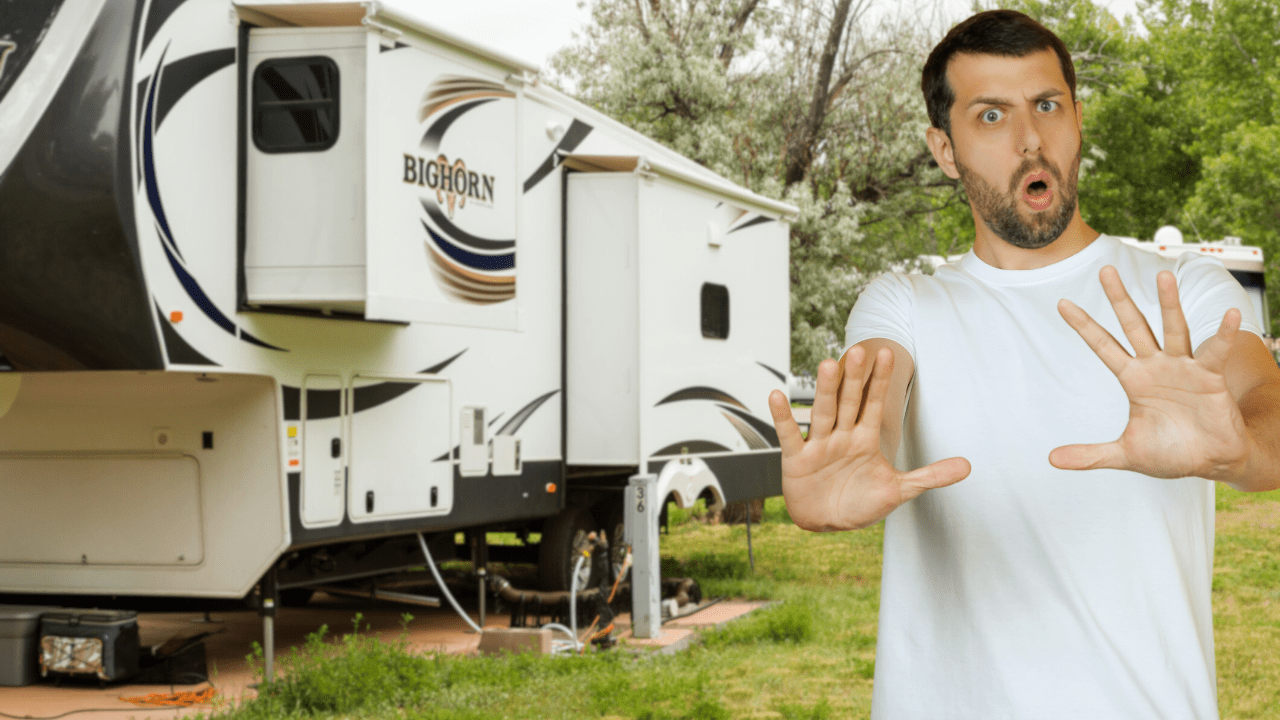

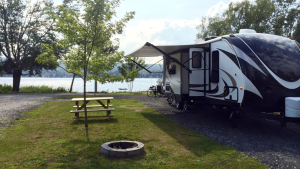
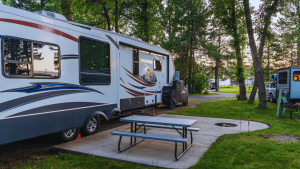
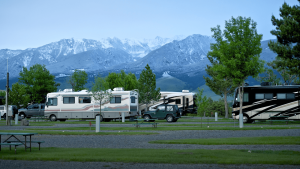

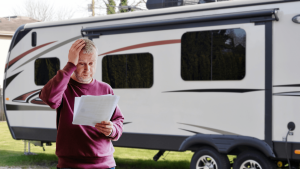
The fact is if your fresh water tank and water heater plus all the lines are full and no air in the system mold and bacteria can not grow in between trips. It’s empty tank and lines sitting with traces of moisture, add hot outside temperature and thats a bad thing. All season long I fill and leave full in between trips ,once a month or just before next trip I drain and fill . Never ever a problem
Hey Glenn, thanks for sharing your method. Glad it’s worked out for you. I know a lot of RVers who feel the same way about keeping the system full. The idea makes sense on paper: less air in the system means less oxygen for aerobic bacteria to thrive.
The challenge is that not all bacteria need oxygen. Anaerobic bacteria can grow in sealed, stagnant water, and they’re often the culprits behind unpleasant smells (like sulfur or “rotten egg” odors). Add in the fact that water quality varies so much depending on where you fill – iron, sulfur, organic matter, even algae in some cases – and you can end up with different results from one trip to the next. (Side note, that’s one of the reasons I also filter water before it reaches the tank. I do it again after it leaves too. Fresh water, if used for drinking/cooking, is not somethign you want to gamble with.)
That’s why most manufacturers and maintenance guides recommend draining between trips. You’ll never get every drop out, but getting the bulk of the water out removes most of the “growth medium.” It also makes sanitizing before your next outing much more effective.
In the end, it comes down to what works for your setup and habits. For folks who camp often and refresh their water regularly, leaving it full may not cause issues. But as a general piece of advice for RVers across different climates and water sources, draining remains the safer baseline, imo. Thanks for your comments!